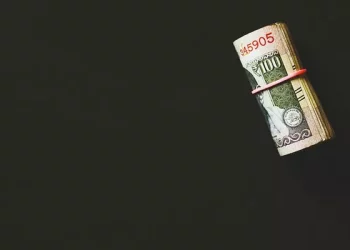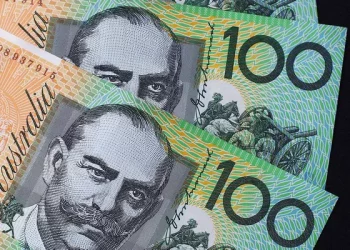New Zealand, an island country located in the southwestern Pacific Ocean, is known for its picturesque landscapes, vibrant culture, and robust economy. The country operates with its own currency, the New Zealand Dollar (NZD), abbreviated as NZ$, or simply the dollar. The New Zealand Dollar has been the official currency since 1967, when it replaced the New Zealand Pound. The country’s currency is issued by the Reserve Bank of New Zealand (RBNZ), which plays a crucial role in ensuring its stability. This article will explore the bills and coins in New Zealand, highlighting their history, design, denominations, and significance in the country’s economy and daily transactions.
Overview of the New Zealand Dollar
Before diving into the specifics of the bills and coins, it is essential to understand the New Zealand Dollar (NZD). As of today, the NZD is the 10th most traded currency in the world, reflecting New Zealand’s strong position in the global financial system. The currency is primarily used in New Zealand, but it is also accepted in some Pacific Island nations such as the Cook Islands, Niue, Tokelau, and the Pitcairn Islands.
New Zealand’s currency is decimalized, which means it is based on units of 100, making it similar to most other modern currencies like the U.S. Dollar or the Euro. The primary unit of currency is the New Zealand Dollar (NZ$), and it is subdivided into 100 smaller units called cents (c).
The country has a history of various currencies, including the New Zealand Pound, before adopting the dollar in 1967. New Zealand transitioned to a decimal currency system to simplify transactions and align with international standards, which has made it easier for businesses and individuals to conduct trade and exchanges.
New Zealand’s Coins
Coins in New Zealand are issued in several denominations, ranging from the smallest unit (the 10-cent coin) to the largest (the $2 coin). These coins are vital for everyday transactions, used in purchasing items of lower value or for making exact change when larger denominations are not available. The coins are made from various metals, including copper, nickel, and steel, and feature different designs that reflect New Zealand’s heritage, flora, fauna, and national symbols.
1-Cent Coin (Discontinued)
The 1-cent coin was once a standard currency in New Zealand, but it was discontinued in 2006 due to inflation and the increasing costs of minting such small-value coins. While still accepted in transactions made before its discontinuation, it is rarely seen in circulation today.
5-Cent Coin
The 5-cent coin, though still part of New Zealand’s currency system, is also rarely used in modern transactions. It is composed primarily of copper-plated steel and features an image of a native New Zealand bird—the Fantail (Rhipidura fuliginosa). Despite its minimal value, the 5-cent coin can still be used in retail purchases.
10-Cent Coin
The 10-cent coin is made of cupronickel (a mixture of copper and nickel) and has a diameter of 19.41 mm. On the obverse side of the coin, there is an image of the Kiwi, New Zealand’s iconic flightless bird, which symbolizes the country’s natural heritage. The coin is used for small purchases, though it has become less frequently used in recent years as inflation has driven up the cost of most goods and services.
20-Cent Coin
The 20-cent coin is a larger denomination than the 10-cent coin and features an image of the native New Zealand wren, also known as the Rock Wren (Xenicus gilviventris). It is made of cupronickel and has a diameter of 21.94 mm. The 20-cent coin is still commonly used in everyday transactions, especially for small amounts. Its slightly larger size makes it easy to distinguish from smaller coins, and it remains an essential part of the coinage system.
50-Cent Coin
The 50-cent coin is a half-dollar coin made from cupronickel and is one of the most frequently used coins in New Zealand’s currency system. The coin features an image of a Tuatara, an ancient reptile endemic to New Zealand, symbolizing the country’s rich biodiversity. This coin is used for medium-value purchases and is particularly important in situations where small denominations are needed to make exact change.
$1 Coin
The $1 coin was introduced in 1991 to replace the $1 paper note. It is made from nickel-brass and has a gold-like color. The coin features a unique design that depicts the Southern Cross constellation, a distinctive feature of the southern hemisphere night sky. The $1 coin plays a crucial role in everyday transactions, and its widespread use reflects the importance of the coin in the country’s economy.
$2 Coin
The $2 coin is the highest denomination of coin in New Zealand’s currency system. It is made from cupronickel and features an image of the Native Kaka, a large forest parrot endemic to New Zealand. The coin’s design incorporates elements of the New Zealand wilderness, which is celebrated as part of the country’s national identity. The $2 coin is widely used for larger purchases or for making exact change in both retail and commercial settings.
New Zealand’s Banknotes
New Zealand’s banknotes are printed on polymer (plastic) material, making them more durable and resistant to wear and tear compared to traditional paper banknotes. The Reserve Bank of New Zealand has issued polymer notes in denominations of $5, $10, $20, $50, and $100. These banknotes are widely accepted for larger transactions, and each denomination features images that reflect New Zealand’s culture, history, and national identity.
$5 Banknote
The $5 banknote is the smallest denomination of banknote in New Zealand. It features a portrait of Sir Edmund Hillary, the first person to summit Mount Everest, alongside an image of the mountain itself. The $5 note is light blue in color and includes several security features, such as a watermark and a holographic strip, to prevent counterfeiting. This banknote is frequently used in small to medium transactions, particularly in day-to-day purchases.
$10 Banknote
The $10 note is green and features a portrait of Kate Sheppard, a prominent suffragist who played a significant role in New Zealand becoming the first country in the world to grant women the right to vote in 1893. The $10 note also includes images of the native flax plant (Harakeke), which has been significant in Māori culture. This note is commonly used for both retail and service transactions.
$20 Banknote
The $20 banknote is the most commonly used note in New Zealand. It features a portrait of Queen Elizabeth II, alongside images of New Zealand’s history and heritage. The $20 note also showcases the national flower, the Kowhai, which is a symbol of New Zealand’s natural beauty. The color of the note is predominantly orange, making it easily identifiable in everyday transactions. This banknote is used in various settings, from small purchases to more substantial payments.
$50 Banknote
The $50 banknote is a yellow-gold note that features a portrait of the late New Zealand prime minister, Sir Robert Muldoon. The $50 note celebrates New Zealand’s political history and its achievements in the modern era. It is used for larger transactions and can often be seen in business dealings or for paying substantial bills.
$100 Banknote
The $100 note is the highest denomination in circulation in New Zealand and features a portrait of the first prime minister of New Zealand, Richard Seddon. The note is purple and includes images that represent New Zealand’s economy, such as the oil and energy sectors. This note is typically used for higher-value transactions and is less frequently seen in casual retail settings but is important in larger business or financial dealings.
Security Features of New Zealand Currency
New Zealand’s banknotes and coins are designed with various security features to prevent counterfeiting and maintain the integrity of the currency system. Some of the security features in New Zealand banknotes include:
Watermarks: Many of New Zealand’s higher-value banknotes feature a watermark of a prominent figure or national symbol, which is visible when the note is held up to the light.
Holograms: Modern New Zealand banknotes include holographic elements that change colors when viewed from different angles, making them harder to reproduce.
Raised Printing: Some areas of the banknotes have raised printing, allowing people to feel the note’s texture, which adds an additional layer of security.
UV Features: New Zealand banknotes include ultraviolet (UV) printing, which can only be seen under UV light, providing further protection against fraud.
Color Shifting Ink: Some banknotes feature color-shifting ink that changes color when the note is tilted, adding another security layer.
Coins in New Zealand, while not as heavily protected against counterfeiting as banknotes, are made of durable materials and have distinctive designs to make them easily identifiable and difficult to replicate.
Conclusion
The currency in New Zealand, made up of bills and coins, is an integral part of daily life and plays a vital role in the country’s economy. New Zealand’s currency system, characterized by its coins and polymer banknotes, is designed to be user-friendly, durable, and secure. The design of each coin and banknote reflects the country’s rich history, culture, and natural beauty, making the money system not only functional but also a testament to the nation’s identity.
For both residents and visitors, understanding the various denominations and their designs is crucial for navigating New Zealand’s economic landscape. Whether you’re using a small 10-cent coin to buy a coffee or a $100 banknote for larger purchases, New Zealand’s currency system is designed to make transactions straightforward and efficient. With a history rooted in a desire for simplicity and practicality, New Zealand’s bills and coins provide a strong foundation for the country’s continued economic success.
Related Topics:

























